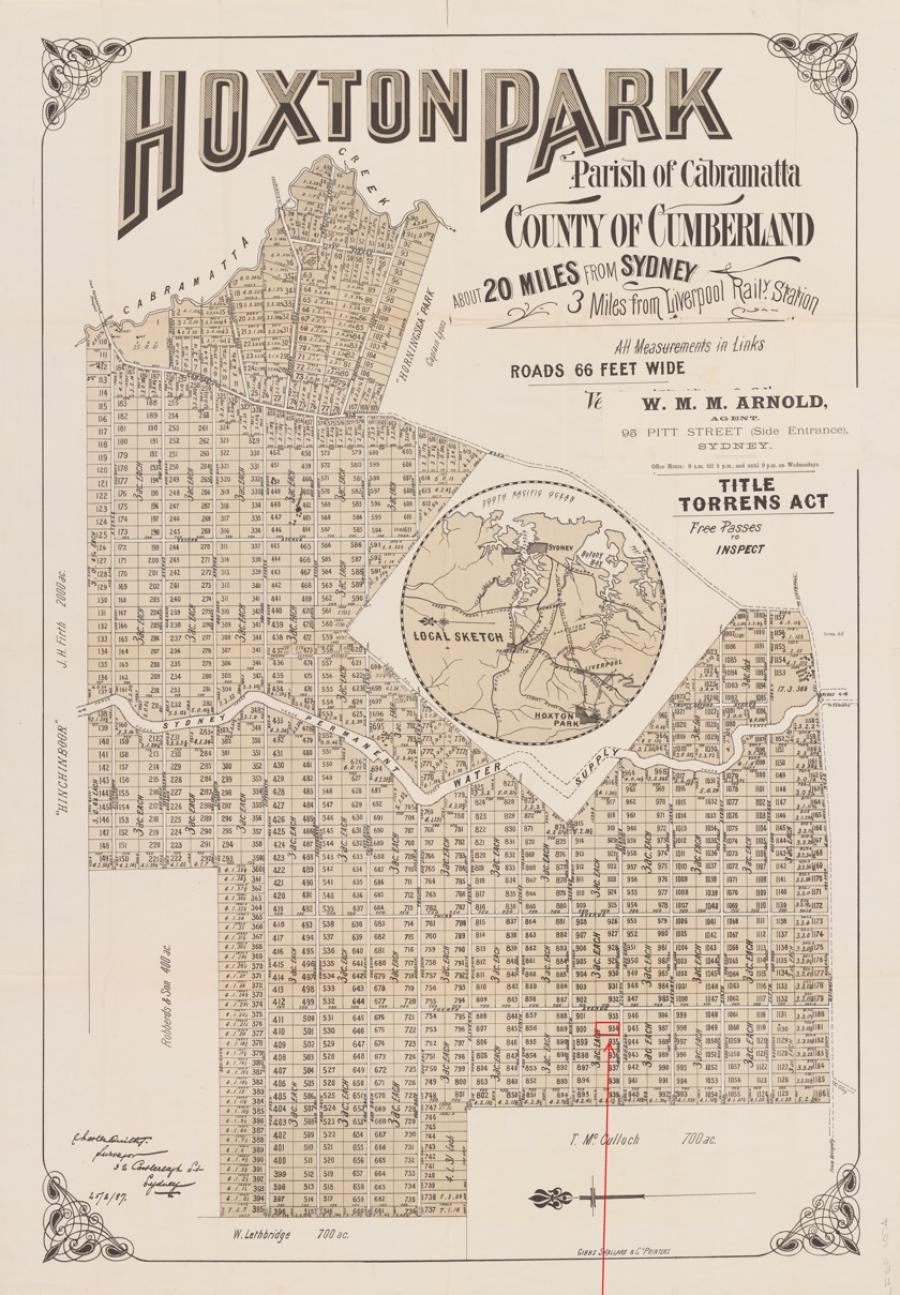
Authors: Dr Sue Rosen and Liz Gorman
Client: C & L Development Group Pty Ltd
Our team compiled a Historic Land Use Report focussed on the historic landscape, farming activities and possible surface disturbance to suit our client's needs in attaining a DA and assessing the site for any archaeological relics.
The study site was created as lot 934 of the Hoxton Park Estate, and on 22 November 1892, it was purchased by William James Golding. Golding held the property until September 1935 when it was transferred to Robert Henry Williams, and then to gardeners, poultry farmers, labourers and drivers. This review of land tenure and land usage reveals that clearing of the study site may have commenced as early as 1818. The most intensive land disturbance is likely to have begun from the late 1930’s with the construction of residential dwellings, associated outbuildings, driveways and garden plantings by the Dudley’s, who purchased the site in 1937.